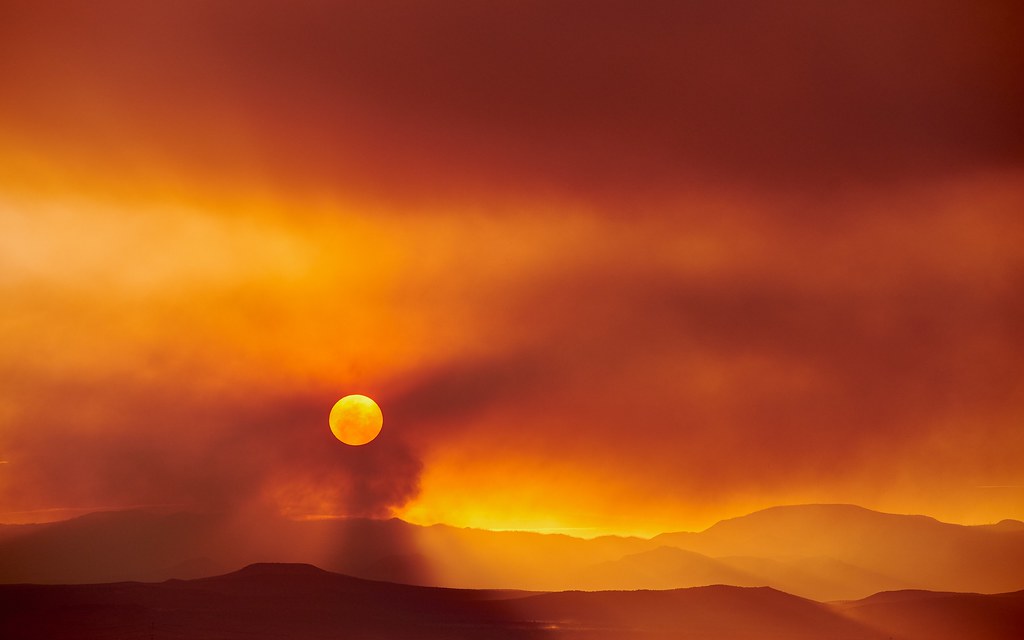翻譯/姜唯;審校/林大利;稿源/ENS
美國海洋大氣總署(National Oceanic and Atmospheric Administratio, NOAA)國家環境資訊中心13日發表最新全球資料,自142年前開始記錄地球溫度以來,2021年7月是最熱的一個月。
拜登政府的海洋、大氣和氣候科學與政策專家、NOAA署長史賓瑞(Rick Spinrad)博士說:「7月通常是全世界上一年中最熱的月份,但2021年7月成為有紀錄以來最熱的7月,也是最熱的一個月。這個新紀錄再次印證氣候變遷為全球帶來的不安和破壞。」
NOAA是美國商務部下的一個國家級科學和監管機構,負責預報天氣、監測海洋和大氣狀況、製作海洋相關資訊繪圖、進行深海勘探以及管理捕撈和保護美國專屬經濟區內的哺乳動物和瀕危物種。
去年7月,極端高溫和氣候變遷在全球以各種方式表現出來——洪水、熱浪、乾旱、颶風、野火和冰川消融。
歷史上的7月溫度
全球而言,陸地和海洋加總表面溫度比20世紀平均值15.8°C高了0.93°C,成為142年前人類開始記錄溫度以來最熱的7月。
2021年7月比2016年7月創下的前一個最高溫紀錄高0.01°C。2019年和2020年7月溫度都平2016年7月紀錄。
就北半球而言,地表溫度是有紀錄以來的7月最高溫度,史無前例地高出平均水準1.54°C,超過2012年創下的紀錄。
全球區域紀錄
亞洲迎來有紀錄以來最熱的7月,打破2010年創下的紀錄;歐洲經歷了有記錄以來第二熱的7月——與2010年7月持平,低於2018年7月;北美洲、南美洲、非洲和大洋洲都是前10名最熱7月。
這些資料由美國國家環境資訊中心(National Centers for Environmental Information, NCEI)所收集。NCEI管理著世界上最大的大氣、沿海、地球物理和海洋資料檔案之一,其中包含從太陽表面到地核、從古老的樹木年輪和冰芯記錄到接近即時的衛星圖像資訊.
NCEI的全球年度氣溫排名展望顯示,包含2021年7月資料在內,2021年很有可能躋身有紀錄以來世界上最熱的10年之列。
前不久聯合國政府間氣候變遷專門委員會IPCC發表最新氣候變遷科學報告,整合來自266個國家的科學家提供的資料。NOAA的每月NCEI報告中詳述的極端高溫,和IPCC報告中概述的長期變化不謀而合。
氣候報告中的其他重點:海冰面積
海冰覆蓋範圍因半球而異:根據美國國家冰雪資料中心的分析,2021年7月的北極海冰面積是43年紀錄中第四小。只大於2012年7月、2019年和2020年的海冰面積。
南極海冰面積在7月份高於平均水準,是自2015年以來最大的7月份海冰面積,也是有記錄以來的第八大。
熱帶地區比平均水準更熱鬧:在大西洋盆地,本季第五次被命名風暴艾爾莎於7月1日形成,是這個季節有記錄以來最早。北太平洋東部和西太平洋盆地各有三場被命名的風暴。整體而言,今年截至7月為止,全球熱帶氣旋活動中被命名的數量高於一般水準。
Hot, Hotter, Hottest July on Record
July 2021 was the hottest month ever documented on this planet since recordkeeping began 142 years ago, according to new global data released today by NOAA's National Centers for Environmental Information.
"In this case, first place is the worst place to be," said NOAA Administrator Rick Spinrad, PhD, an ocean, atmosphere, and climate science and policy expert and former NOAA chief scientist. President Joe Biden selected him to run NOAA.
"July is typically the world's warmest month of the year, but July 2021 outdid itself as the hottest July and month ever recorded," Dr. Spinrad said. "This new record adds to the disturbing and disruptive path that climate change has set for the globe."
The National Oceanic and Atmospheric Administration, usually called NOAA, is an American scientific and regulatory agency within the U.S. Department of Commerce that forecasts weather, monitors oceanic and atmospheric conditions, charts the seas, conducts deep sea exploration, and manages fishing and protection of marine mammals and endangered species in the U.S. exclusive economic zone.
This past July, extreme heat and global climate change showed itself in a wide range of ways around the globe – floods, heatwaves, drought, hurricanes, wildfires and loss of glacial ice.
July 2021 Has the Numbers to Prove It
Globally: the combined land and ocean-surface temperature was 1.67 degrees F (0.93 of a degree C) above the 20th-century average of 60.4 degrees F (15.8 degrees C), making it the hottest July since records began 142 years ago.
It was 0.02 of a degree F (0.01 of a degree C) higher than the previous record set in July 2016, which was then tied in 2019 and 2020.
The Northern Hemisphere: the land-surface only temperature was the highest ever recorded for July, at an unprecedented 2.77 degrees F (1.54 degrees C) above average, surpassing the previous record set in 2012.
Regional records:
Asia had its hottest July on record, besting the previous record set in 2010;
Europe had its second-hottest July on record – tying with July 2010 and trailing behind July 2018;
North America, South America, Africa and Oceania all had a top-10 warmest July.
These facts were gathered by the National Centers for Environmental Information, NCEI, an agency of the United States government. NCEI manages one of the world's largest archives of atmospheric, coastal, geophysical, and oceanic data, containing information that ranges from the surface of the Sun to Earth's core, and from ancient tree ring and ice core records to near-real-time satellite images.
NCEI's Global Annual Temperature Rankings Outlook indicates that, including the data from July 2021, "it remains very likely that 2021 will rank among the world's 10-warmest years on record."
This new data has come on the heels of a blistering report on the physical science of climate change from the Intergovernmental Panel on Climate change, IPCC, with scientists from 266 countries contributing data.
Extreme heat detailed in NOAA's monthly NCEI reports is also a reflection of the long-term changes outlined in a major report released this week by the Intergovernmental Panel on Climate Change. https://www.ipcc.ch/report/ar6/wg1/
Other notable highlights from NOAA's July global climate report
Sea ice coverage varied by hemisphere: The Arctic sea ice extent for July 2021 was the fourth-smallest for July in the 43-year record, according to analysis by the National Snow and Ice Data Center. Only July 2012, 2019 and 2020 had a smaller sea ice extent.
Antarctic sea ice extent was above average in July — the largest July sea ice extent since 2015 and the eighth highest on record.
The tropics were busier than average: In the Atlantic basin, the season's earliest fifth-named storm, Elsa, formed on July 1. The Eastern North and Western Pacific basins each logged three named storms. Overall, global tropical cyclone activity this year so far (through July) has been above-normal for the number of named storms.
※ 全文及圖片詳見:ENS





